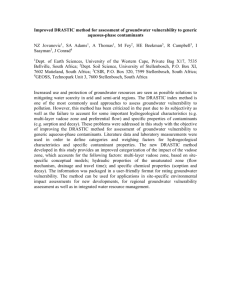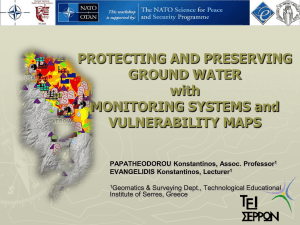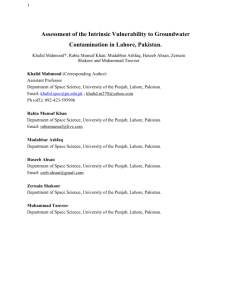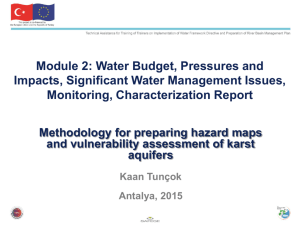MS Word Technical Paper Template
advertisement
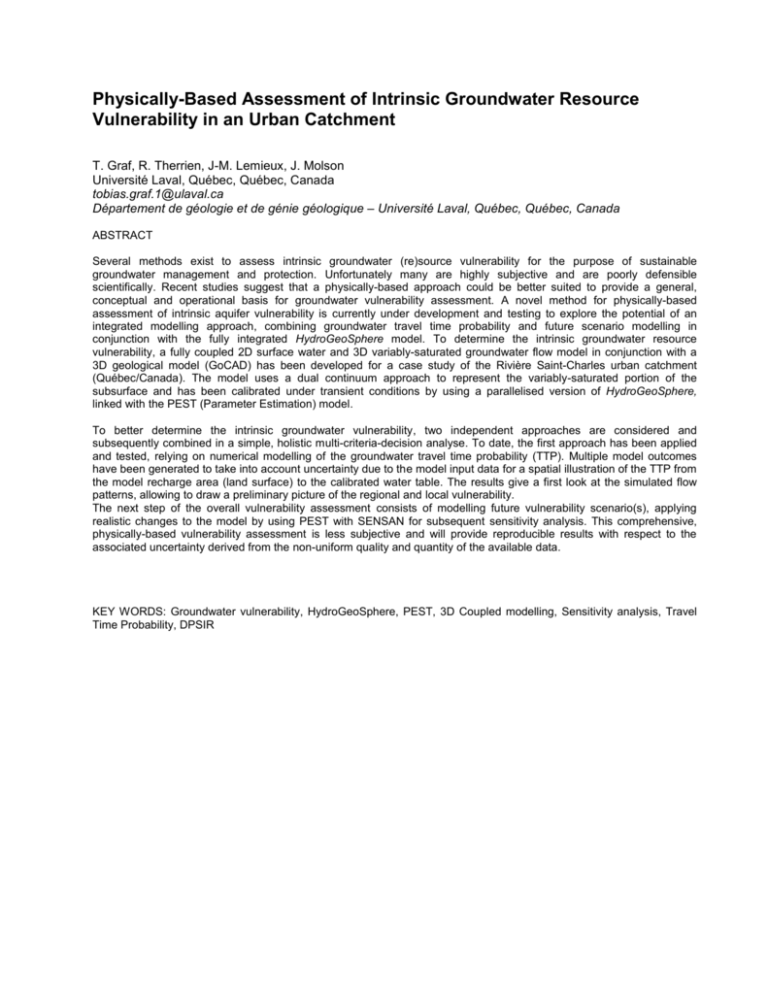
Physically-Based Assessment of Intrinsic Groundwater Resource Vulnerability in an Urban Catchment T. Graf, R. Therrien, J-M. Lemieux, J. Molson Université Laval, Québec, Québec, Canada tobias.graf.1@ulaval.ca Département de géologie et de génie géologique – Université Laval, Québec, Québec, Canada ABSTRACT Several methods exist to assess intrinsic groundwater (re)source vulnerability for the purpose of sustainable groundwater management and protection. Unfortunately many are highly subjective and are poorly defensible scientifically. Recent studies suggest that a physically-based approach could be better suited to provide a general, conceptual and operational basis for groundwater vulnerability assessment. A novel method for physically-based assessment of intrinsic aquifer vulnerability is currently under development and testing to explore the potential of an integrated modelling approach, combining groundwater travel time probability and future scenario modelling in conjunction with the fully integrated HydroGeoSphere model. To determine the intrinsic groundwater resource vulnerability, a fully coupled 2D surface water and 3D variably-saturated groundwater flow model in conjunction with a 3D geological model (GoCAD) has been developed for a case study of the Rivière Saint-Charles urban catchment (Québec/Canada). The model uses a dual continuum approach to represent the variably-saturated portion of the subsurface and has been calibrated under transient conditions by using a parallelised version of HydroGeoSphere, linked with the PEST (Parameter Estimation) model. To better determine the intrinsic groundwater vulnerability, two independent approaches are considered and subsequently combined in a simple, holistic multi-criteria-decision analyse. To date, the first approach has been applied and tested, relying on numerical modelling of the groundwater travel time probability (TTP). Multiple model outcomes have been generated to take into account uncertainty due to the model input data for a spatial illustration of the TTP from the model recharge area (land surface) to the calibrated water table. The results give a first look at the simulated flow patterns, allowing to draw a preliminary picture of the regional and local vulnerability. The next step of the overall vulnerability assessment consists of modelling future vulnerability scenario(s), applying realistic changes to the model by using PEST with SENSAN for subsequent sensitivity analysis. This comprehensive, physically-based vulnerability assessment is less subjective and will provide reproducible results with respect to the associated uncertainty derived from the non-uniform quality and quantity of the available data. KEY WORDS: Groundwater vulnerability, HydroGeoSphere, PEST, 3D Coupled modelling, Sensitivity analysis, Travel Time Probability, DPSIR
